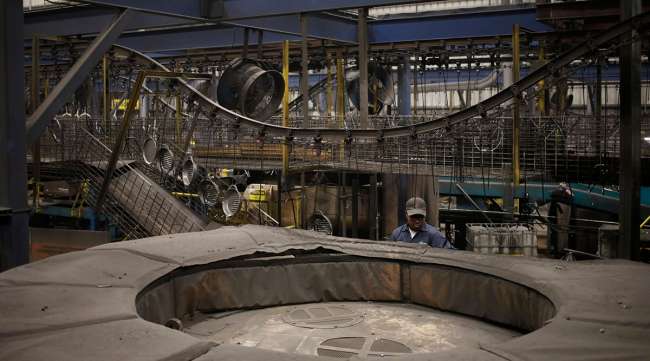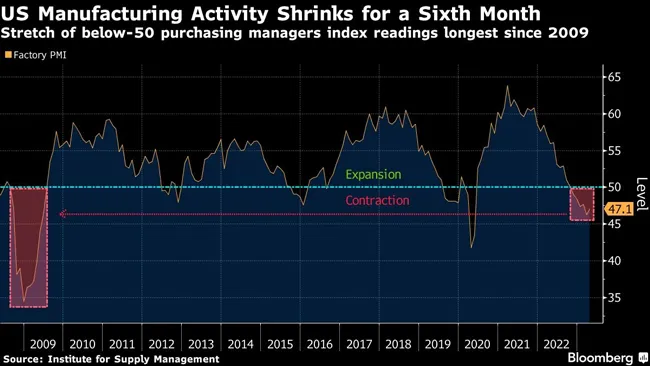Bloomberg News
Factory Activity Contracts for a Sixth Month in April

[Stay on top of transportation news: Get TTNews in your inbox.]
U.S. factory activity contracted for a sixth-straight month in April, the longest such stretch since 2009 and a sign of lingering malaise in manufacturing.
The Institute for Supply Management’s gauge of factory activity rose to 47.1 from an almost three-year low of 46.3 a month earlier, according to data released May 1. A reading below 50 indicates shrinking activity.
A measure of prices paid for materials rebounded to the highest level since July. The increase coincided with a pickup in crude oil prices early in the month, though they have recently cooled on concerns about demand.
The step-up in input prices comes on the heels of data from late April that showed the Federal Reserve’s key inflation gauges rose at a brisk pace in March. Central bankers are expected to raise interest rates by 25 basis points this week.
The purchasing managers group’s measures of orders and production improved slightly but remained in contraction territory. The good news is that the figures suggest the manufacturing sector is shrinking at a slower rate.

“New order rates remain sluggish as panelists remain concerned about when manufacturing growth will resume,” Timothy Fiore, chair of ISM’s Manufacturing Business Survey Committee, said in a statement. “Panelists’ comments registered a 1-to-1 ratio regarding optimism for future growth and continuing near-term demand declines.”
The employment measure rose above 50 for the first time in three months. The monthly jobs report is due May 5 and will give a fuller picture of the labor market in April.
At the same time, manufacturers face a host of challenges, including higher borrowing costs, tougher credit conditions, less demand for merchandise and still-elevated prices.
Eleven industries reported contraction in April, led by furniture, wood products and nonmetallic mineral products. Five industries expanded.
ISM’s inventories figures were mixed. A measure of stockpiles at factories fell to the lowest level since August 2020, suggesting a diminishing risk of an overhang. However, a gauge of customer inventories climbed to the highest level since 2016 and indicated orders growth may remain tepid. Order backlogs shrank at a faster pace in April.
The latest regional factory data were largely negative. Manufacturing indexes from the Philadelphia and Kansas City Fed banks fell to the lowest level since May 2020. Gauges from the Fed banks in Richmond and Dallas also declined, while an index of New York state factory activity expanded for the first time in five months.
Want more news? Listen to today's daily briefing below or go here for more info:




